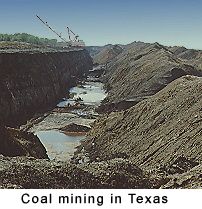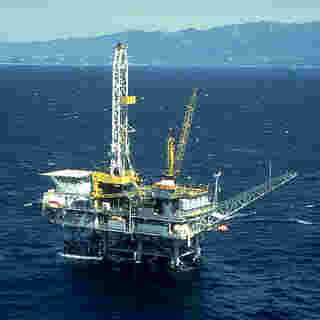BACKGROUND:
A country is as rich as its resources. It is a well known
statement, that states "everything is either grown or mined."
Agriculture and mining industry are important to the economy of every
country. Both industries sustains the overall industry and provides products
that can be exported for wealth. Mining includes not only minerals like
gold, silver, or copper but petroleum, coal, and even aggregate (gravel,
sand).
 In the United States some states have more resources than
others. For instance there are many states that mine coal, but some are
noted for specific parts of the coal mining industry. Wyoming is the state
with the most coal production. West Virginia is the state with the most
underground coal production. Kentucky is the state with the most coal mines.
Pennsylvania is the state with the most anthracite (hard) coal production.
Alabama is the state with highest average price for coal. Virginia is the
state with the earliest commercial production. In the United States some states have more resources than
others. For instance there are many states that mine coal, but some are
noted for specific parts of the coal mining industry. Wyoming is the state
with the most coal production. West Virginia is the state with the most
underground coal production. Kentucky is the state with the most coal mines.
Pennsylvania is the state with the most anthracite (hard) coal production.
Alabama is the state with highest average price for coal. Virginia is the
state with the earliest commercial production.
Specific states also have an overall mining industry. For
example, California is rich in natural resources. The mining industry
contributes several billion dollars per year to the state’s economy. In
addition, California is the third largest producer of gas and oil in the
country. The most important mining industry in California is the cement and
sand/gravel industry, which generates over one billion dollars of revenue
per year. Many countries and other states do not have the rich sand and
gravel deposits that California does, so the state exports these materials
as far away as Japan and Australia. Another large mining industry in
California are boron-bearing mineral mines in the southern part of the
state. Other important resources include gold, tungsten, gypsum, pumice,
silver, quartz, diatomite, lime, and talc.
PROCEDURE:
- Use this summary to emphasize the importance of the mining industry.
This is very rarely discussed. Ask students what they think is the most
important mining resource that California has. They will probably answer
gold, and will be surprised that it is sand and gravel.
-
You may want the students to compare and contrast the mining products of
the various states.
 ALABAMA
coal, petroleum, natural gas, stone, iron ore, limestone ALABAMA
coal, petroleum, natural gas, stone, iron ore, limestone
ALASKA petroleum, natural gas, sand and gravel, stone, gold
ARIZONA copper, molybdenum, coal, sand and gravel
ARKANSAS petroleum, natural gas, sand and gravel, diamonds
CALIFORNIA petroleum, sand and gravel, boron
COLORADO petroleum, natural gas, coal, molybdenum
CONNECTICUT stone, sand and gravel
DELAWARE sand and gravel, magnesium products
FLORIDA phosphate rock, petroleum, stone
GEORGIA clays, stone, sand and gravel
HAWAII stone, sand and gravel
IDAHO silver, phosphate rock, lead, zinc, gold
ILLINOIS coal, petroleum, stone
INDIANA coal, stone
IOWA stone, sand and gravel
KANSAS stone, sand and gravel
KENTUCKY coal, stone, petroleum, sand and gravel
LOUISIANA natural gas, petroleum, sulfur, salt, sand and gravel
MAINE sand and gravel, garnet
MARYLAND coal, stone, sand and gravel, clays
MASSACHUSETTS stone, sand and gravel, clays
MICHIGAN copper, iron ore, petroleum, natural gas, sand and gravel
MINNESOTA iron ore, sand and gravel, stone
MISSISSIPPI petroleum, natural gas, sand and gravel, clays
MISSOURI lead, stone
MONTANA petroleum, coal, copper, natural gas, silver
NEBRASKA petroleum, sand and gravel
NEVADA gold, mercury, magnesite, barite, silver, sand and gravel
NEW HAMPSHIRE sand and gravel, stone
NEW JERSEY stone, sand and gravel, zinc
NEW MEXICO natural gas, petroleum, uranium, copper, silver, gold
NEW YORK stone, sand and gravel, salt
NORTH CAROLINA stone, phosphate rock, sand and gravel
NORTH DAKOTA petroleum, coal, natural gas, sand and gravel
OHIO coal, petroleum, natural gas, stone, lime
OKLAHOMA petroleum, natural gas, coal, stone
OREGON sand and gravel, stone, nickel, pumice
PENNSYLVANIA coal, stone
RHODE ISLAND sand and gravel, stone
SOUTH CAROLINA stone, clays
SOUTH DAKOTA gold, stone
TENNESSEE coal, stone, zinc
TEXAS petroleum, natural gas
UTAH petroleum, coal, copper, uranium, gold
VERMONT stone, asbestos, talc
VIRGINIA coal, stone, lime, sand and gravel
WASHINGTON coal, sand and gravel, stone, gold
WEST VIRGINIA coal, natural gas, petroleum, stone, sand and gravel
WISCONSIN sand and gravel, stone
WYOMING petroleum, coal, uranium, natural gas, clays
- As a homework assignment, have the students research the local mining
industry, or have them compare the resources the United States has
compared to other countries. The students will be surprised at how "rich"
the United States is. The internet is a great way to search for
information on each of the states. A good place to start is the United
States Geological Survey site, at
http://minerals.usgs.gov/minerals/ and the Office of Surface
Mining, at
http://www.osmre.gov/osm.htm.
|